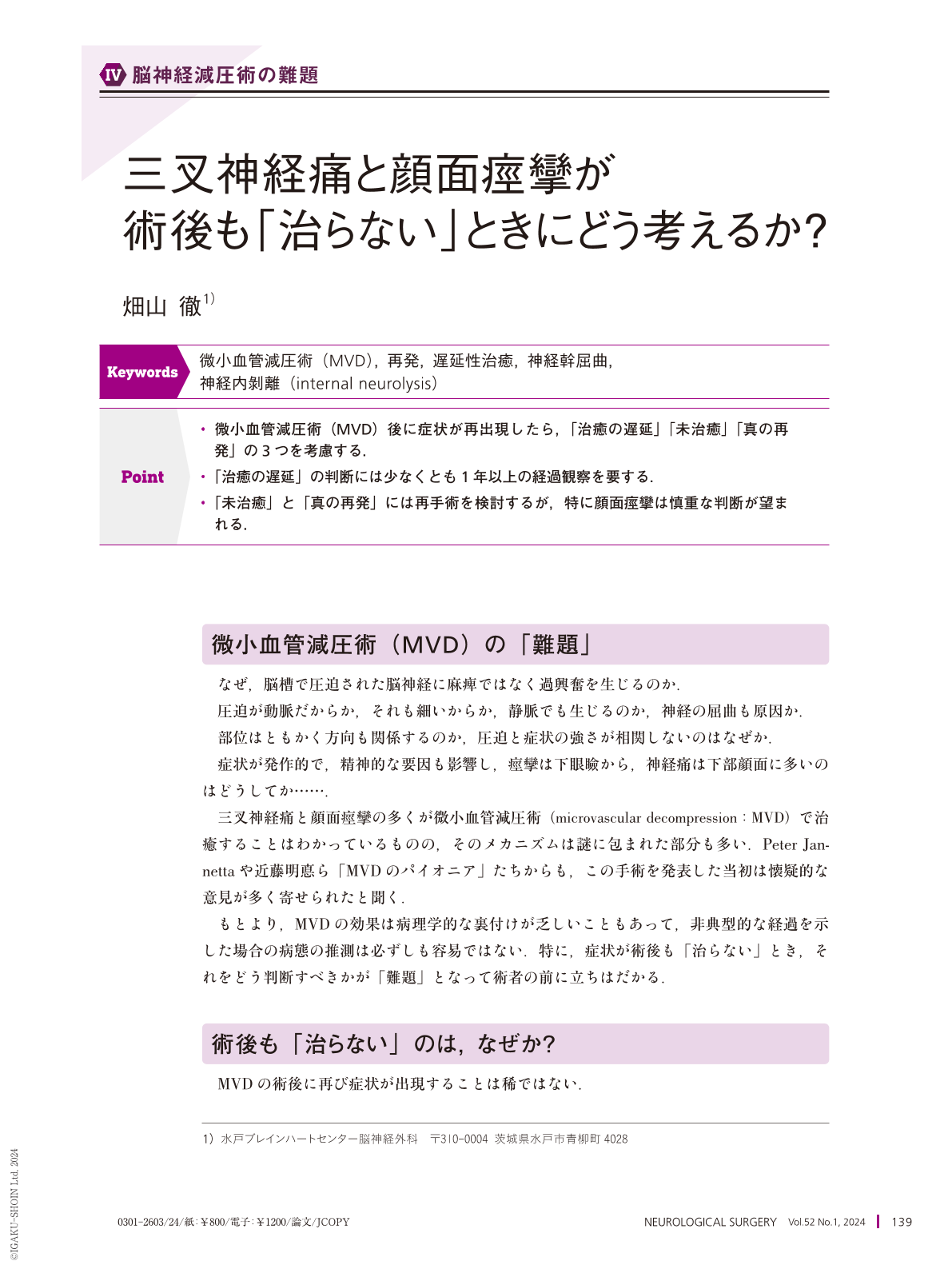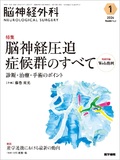Japanese
English
- 有料閲覧
- Abstract 文献概要
- 1ページ目 Look Inside
- 参考文献 Reference
Point
・微小血管減圧術(MVD)後に症状が再出現したら,「治癒の遅延」「未治癒」「真の再発」の3つを考慮する.
・「治癒の遅延」の判断には少なくとも1年以上の経過観察を要する.
・「未治癒」と「真の再発」には再手術を検討するが,特に顔面痙攣は慎重な判断が望まれる.
*本論文中、[Video]マークのある図につきましては、関連する動画を見ることができます(公開期間:2027年2月まで)。
Although microvascular decompression(MVD)is a highly effective treatment, there is little pathological evidence and some aspects of its mechanism remain unclear. Therefore, when symptoms appear after surgery, it is difficult to determine the pathological condition and select the treatment method. Therefore, we recommend dividing these factors into three categories.
The first is “prolonged cure.” Compressed nerves may take time to regenerate; therefore, it is necessary to wait at least one year to see if they recover naturally, especially in facial spasms. The second is “uncured.” Intraoperative video and postoperative imaging findings should be reviewed. If a compressed blood vessel is overlooked or inappropriately decompressed, additional surgery should be performed. The third is “true recurrence,” which is the loss of fixation of compressed blood vessels and granulomatization of the Teflon. Nerve bending that occurs again due to the retraction of the trigeminal nerve is corrected by reoperation.
The therapeutic effects of reoperation are particularly strong in trigeminal neuralgia. Owing to the risk of nerve damage due to adhesion dissection, it is important to carefully consider and establish good communication with patients before surgery.

Copyright © 2024, Igaku-Shoin Ltd. All rights reserved.


